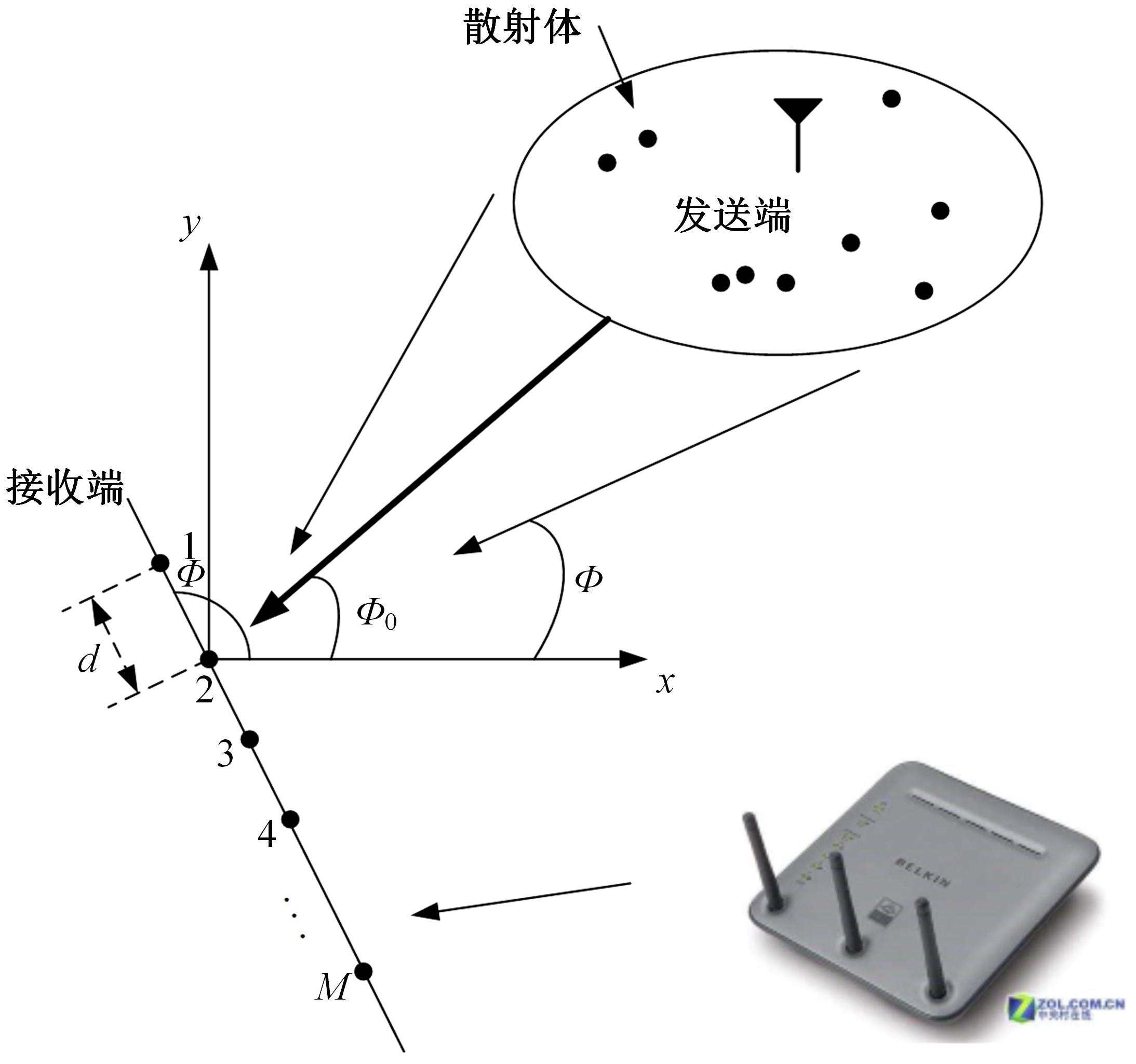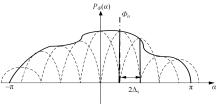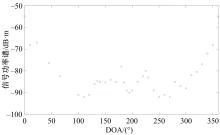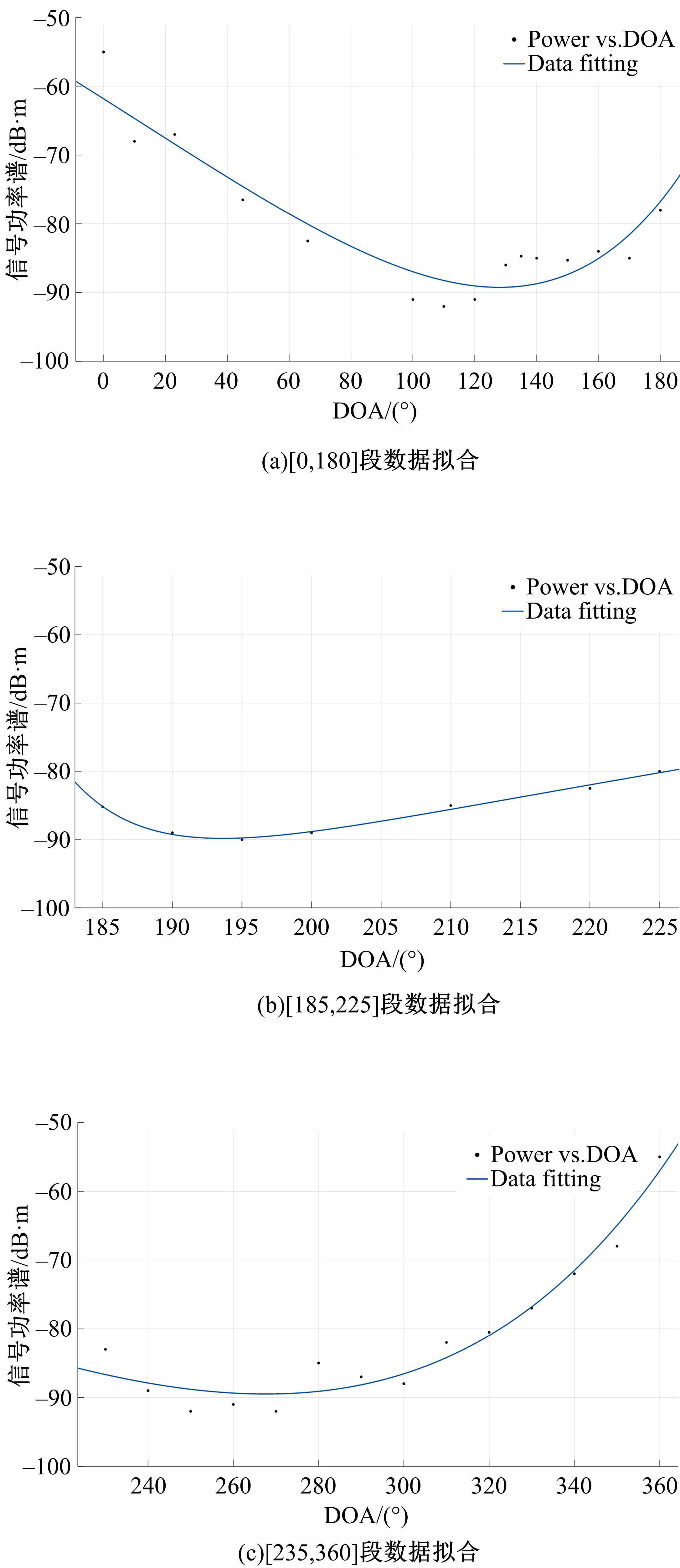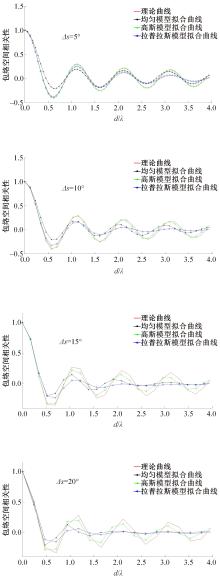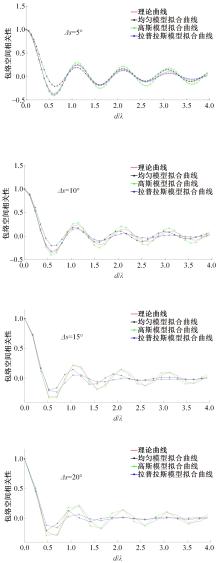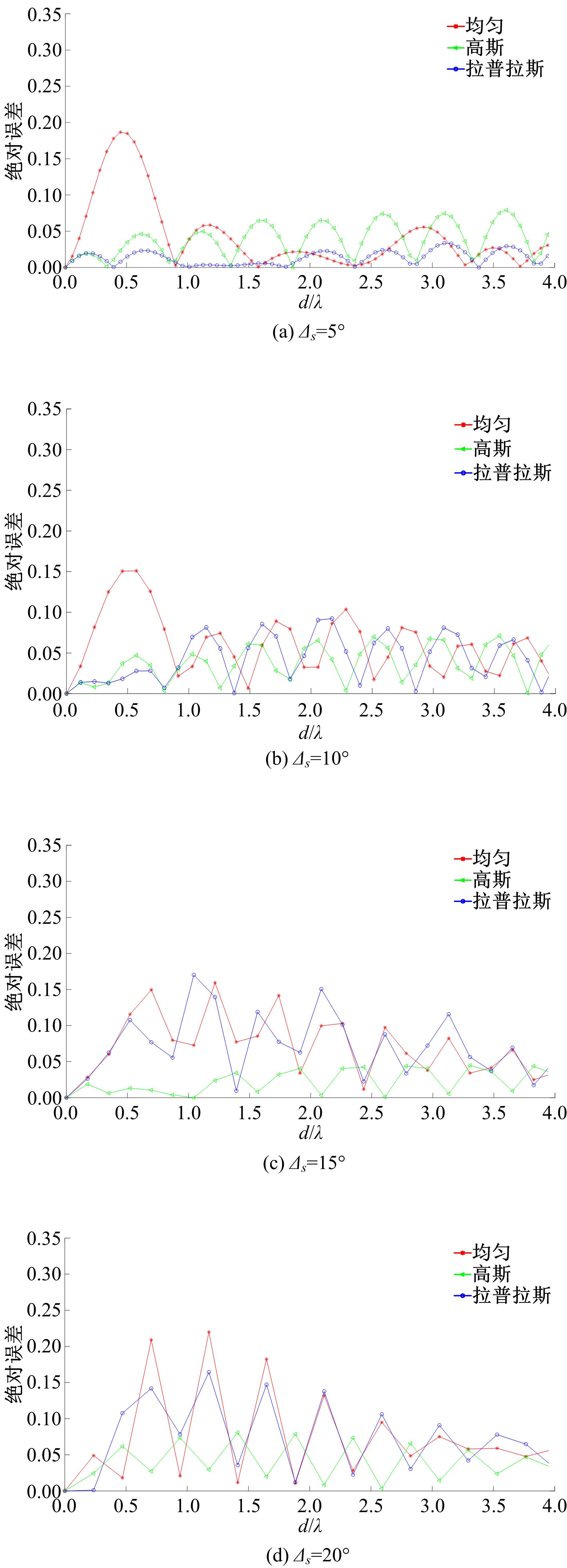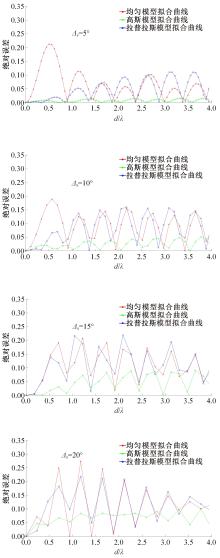Journal of Jilin University(Engineering and Technology Edition) ›› 2023, Vol. 53 ›› Issue (10): 2994-3006.doi: 10.13229/j.cnki.jdxbgxb.20211319
Previous Articles Next Articles
MIMO channel Characteristics analysis of AoA arbitrary distribution based on basic function fitting
Jie ZHOU( ),Xue-ying Wang,Qian CHEN,Hong LUO,Lei XU
),Xue-ying Wang,Qian CHEN,Hong LUO,Lei XU
- School of Electronic and Information,Nanjing University of Information Science and Technology,Nanjing 210044,China
CLC Number:
- TN92
| 1 | Elayoubi S E, Fallgren M, Spapis P, et al. 5G Service requirements and operational use cases: analysis and METIS II vision[C]∥European Conference on Networks & Communications, Athens, Greek, 2016: 158-162. |
| 2 | 郭文祥, 余志勇, 逄晨,等. 认知无线电频谱感知技术综述[J]. 通信技术, 2018, 51(2): 261-265. |
| Guo Wen-xiang, Yu Zhi-yong, Pang Chen, et al.Overview of cognitive radio spectrum sensing technology[J]. Communication Technology,2018, 51(2):261-265. | |
| 3 | 赵水静. 大规模MIMO-OFDM系统的双稀疏信道建模与估计方法研究[D].南京: 南京邮电大学通信与信息工程学院, 2020. |
| Zhao Shui-jing. Research on double sparse channel modeling and estimation method for massive MIMO-OFDM system[D]. Nanjing: School of Communication and Information, Nanjing University of Posts and Telecommunications, 2020. | |
| 4 | 肖大家. 5G密集网络中的干扰协调技术研究[D]. 南京: 东南大学通信工程学院, 2018. |
| Xiao Da-jia. Research on interference coordination technology in 5G dense network[D]. Nanjing: College Communication Engineering,Southeast University, 2018. | |
| 5 | 林鑫. 第5代移动通信网络的新业务及其关键技术分析[J]. 信息通信, 2018(11): 259-261. |
| Lin Xin. New business and key technology analysis of the 5th generation mobile communication network[J]. Information and Communication, 2018(11): 259-261. | |
| 6 | 黄俊然. 无线信道测量与建模中实测数据拟合的研究[D]. 天津: 天津大学天津大学电器自动化与信息工程学院, 2010: 7-8. |
| Huang Jun-ran. Fitting of measured data in wireless channel measurement and modeling[D]. Tianjin: School of Electrical Automation and Information Engineering,Tianjin University, 2010: 7-8. | |
| 7 | 闭宇铭. 非平稳无线信道建模及其仿真技术研究[D]. 北京: 北京邮电大学信息与通信工程学院,2017: 16-20. |
| Bi Yu-ming. Research on modeling of non-stationary wireless channel and its simulation technique[D]. Beijing: School of Information and Communication Engineering,Beijing University of Postsand Telecommunications, 2017: 16-20. | |
| 8 | Fleury B H. First and second-order character- ization of direction dispersion and space selectivity in the radio channel[J]. IEEE Transactions on Information Theory, 2000, 46(6): 2027-2044. |
| 9 | Ziółkowski Cezary, Kelner J M. Empirical models of the azimuthal reception angle—Part I: comparative analysis of empirical models for different propagation environments[J]. Wireless Personal Communi, 2016, 91(2): 771-791. |
| 10 | Xiao H, Nie Z. Low spatial correlation at base station uniform linear antennas[C]∥International Conference on Communications, Circuits and Systems, Guilin, China,2006: 785-787. |
| 11 | 李忻, 聂在平. MIMO信道中衰落信号的空域相关性评估[J]. 电子学报, 2004(12): 1949-1953. |
| Li Xin, Nie Zai-ping. Spatial correlation evaluation of fading signals in MIMO channels[J]. Chinese Journal of Electronics, 2004(12): 1949-1953. | |
| 12 | Abdul Waheed Umrani. Performance analyses of spatial diversity and beam-forming for wireless communication systems[D].Pakistan:United Arab Emirates 2008:39-65. |
| 13 | Yong S K, Honpson J S. Three dimensional spatial fading correlation model for compact MIMO receivers[J]. IEEE Trans. Wireless Communications, 2005, 4(6): 2856-2869. |
| 14 | Gutierrez C A, Patzold M. Sum of sinusoids based simulation of flat fading wireless propagation channels under non-isotropic scattering conditions[C]∥Global Telecom Conference,Washington D.C., USA, 2007: 3842-3846. |
| 15 | Forenza A, Love D J, Heath R W. Simplified spatial correlation models for clustered MIMO channels with different array configurations[J]. IEEE Transactions on Vehicular Technology, 2007, 56(4): 1924-1934. |
| 16 | 周杰, 邹士娇, 陈珍. 衰落相关信道近似算法及其Massive MIMO系统分析[J]. 新疆大学学报: 自然科学版, 2018, 35(3): 100-111. |
| Zhou Jie, Zou Shi-jiao, Chen Zhen. Decay correlation channel approximation algorithm and its Massive MIMO system analysis[J]. Journal of Xinjiang University (Natural Science Edition), 2018, 35(3): 100-111. | |
| 17 | 周杰, 王亚林, 菊池久和. 多天线信道空间衰落相关性近似算法及其复杂性研究[J]. 物理学报, 2014, 63(23): 1-12. |
| Zhou Jie, Wang Ya-lin, Hisakazu Kikuchi. Spatial decay correlation approximation algorithm for multi-antenna channel and its complexity study[J]. Phys J, 2014, 63(23): 1-12. | |
| 18 | Goldsmith A, Jafar S A, Jindal N, et al. Capacity limits of MIMO channels[J]. IEEE JSAC, 2003, 21(5): 684-702. |
| 19 | 朱秋明, 徐大专, 罗艳强, 等. 多输入多输出信道空域相关性评估简化模型[J]. 电波科学学报, 2011, 26(2): 203-208. |
| Zhu Qiu-ming, Xu Da-zhuan, Luo Yan-qiang, et al. A simplified model for the evaluation of multi-input-multi-output channel airspace correlation[J]. Journal of Radio Frequency Science, 2011, 26(2): 203-208. | |
| 20 | 高凯,张尔扬. MIMO信道的空间相关特性及信道容量分析[J]. 电子与信息学报,2007, 29(7): 1542-1545. |
| Gao Kai, Zhang Er-yang. Spatial correlation characteristics and channel capacity analysis of MIMO channel[J]. Journal of Electronics and Information Science, 2007, 29(7): 1542-1545. | |
| 21 | Sieskul B T, Kupferschmidt C, Kaiser T. Spatial fading correlation for semicircular scattering: angular spread and spatial frequency approximations[C]∥International Conference on Communications & Electronics, Nha Trang, Vietnam, 2010: 216-221. |
| 22 | Lee W C Y. Effects on correlation between two mobile radio base-station antennas[J]. IEEE Trans Commun, 1973, 21(11): 1214-1224. |
| 23 | Eyeynis Gradsht, Kim Ryzh. Table of integrals, series and products[M]. New York: Academic Press, 1980. |
| 24 | Jie Z, Zhigang C, Kikuchi H. Analysis of MIMO antenna array based on 3D Von Mises Fisher distribution[J]. Journal of China Universities of Posts and Telecommunications, 2015, 22(2): 1-12. |
| 25 | Jie Z, Kenta I, Shigenobu S. Generalized spatial correlation equations for antenna arrays in wireless diversity reception: exact and approximate analyses[J]. IEICE Trans Communications, 2004, 84(5): 1-5. |
| 26 | 周杰, 曹志钢, 菊池久和. 非对称空间统计信道模型及其MIMO多天线系统[J]. 东南大学学报: 自然科学版, 2014, 44(2): 232-238. |
| Zhou Jie, Cao Zhi-gang, Kikuchi Hisakazu. Asymmetric spatial statistical channel model and its MIMO multi-antenna system[J]. Journal of Southeast University(Natural Science Edition),2014, 44(2): 232-238. | |
| 27 | 陈钱, 周杰, 邵根富. 角度域任意功率谱MIMO信道特征计算[J]. 计算机科学, 2020, 47(6): 271-275. |
| Chen Qian, Zhou Jie, Shao Gen-fu. MIMO channels with arbitrary AoA power spectrum for various wireless environments[J]. Computer Science, 2020, 47(6): 271-275. | |
| 28 | Ghoraishi M, Takada J I, Imai T. A pseudo-geometrical channel model for dense urban line-of-sight street microcell[C]∥The 17th IEEE International Symposium on Personal, Indoor and Mobile Radio Communications (PIMRC), Helsinki, Finland, 2006:1-5. |
| 29 | Ghoraishi H, Jun-ichi J, Takada J, et al. A single bounce channel model for dense urban street microcell[C]∥URSI-Japan Radio Science Meeting, Tokyo,Japan, 2006:1-5. |
| [1] | Qiang GUO,Yu-qiang CUI,Yong WANG. Nodes scheduling algorithm based on dynamic cluster in wireless sensor network [J]. Journal of Jilin University(Engineering and Technology Edition), 2022, 52(6): 1466-1476. |
| [2] | Jian-po LI,Mei-lin LI,Tao YANG,Peng XUE. Low-complexity Wiener filter channel estimation algorithm in massive MIMO-OFDM system [J]. Journal of Jilin University(Engineering and Technology Edition), 2022, 52(1): 211-218. |
| [3] | Da-yang SUN,Xue-ying WANG,Shuang-xue HAN,Hui ZHONG,Jiang-nan DAI. Non⁃line⁃of⁃sight identification and optimization based on virtual coordinates of anchors [J]. Journal of Jilin University(Engineering and Technology Edition), 2021, 51(6): 2207-2215. |
| [4] | Jian-po LI,Peng XUE,Tao YANG,Mei-lin LI. Pilot contamination suppression method for massive MIMO system based on divided pilot reuse [J]. Journal of Jilin University(Engineering and Technology Edition), 2021, 51(6): 2225-2236. |
| [5] | Yi LIU,Ling-ling XIAO,Gai-jing WANG,Wu-jun ZHANG. Resource allocation algorithm based joint optimization for D2D communications in cellular networks [J]. Journal of Jilin University(Engineering and Technology Edition), 2020, 50(1): 306-314. |
| [6] | Cui-ran LI,Yong-sheng YU,Jian-li XIE. Dynamic game algorithm for spectrum sharing based on priority of secondary users [J]. Journal of Jilin University(Engineering and Technology Edition), 2020, 50(1): 315-323. |
| [7] | Jin-peng WANG,Zheng-peng YE,Fan CAO,Nian-yu ZOU. Cooperative distributed antenna transmission method based on co-channel interference in 5G mobile communication system [J]. Journal of Jilin University(Engineering and Technology Edition), 2020, 50(1): 333-341. |
| [8] | Wen-jun LI,Qiang HUA,Li-dong TAN,Yue SUN. An improved algorithm for combination of DV-HOP and RSSI [J]. Journal of Jilin University(Engineering and Technology Edition), 2019, 49(5): 1689-1695. |
| [9] | Hong-yan WANG,Yun-fei FANG,Sheng-qi ZHU,Bing-nan PEI. DOA estimation method considering mutual coupling effect in presence of non⁃uniform noise [J]. Journal of Jilin University(Engineering and Technology Edition), 2019, 49(5): 1706-1714. |
| [10] | Yong LIU,Fang⁃shun DENG,Xiao⁃lin LIU,Si⁃jie MIN,Peng WANG. Frequency estimation of minimum shift keying signal based on dual chaotic oscillator [J]. Journal of Jilin University(Engineering and Technology Edition), 2019, 49(4): 1357-1362. |
| [11] | Hong⁃zhi WANG,Fang⁃da JIANG,Ming⁃yue ZHOU. Power allocation of cognitive radio system based on genetic particle swarm optimization [J]. Journal of Jilin University(Engineering and Technology Edition), 2019, 49(4): 1363-1368. |
| [12] | ZHOU Yan-guo,ZHANG Hai-lin,CHEN Rui-rui,ZHOU Tao. Two-level game approach based resource allocation scheme in cooperative networks [J]. Journal of Jilin University(Engineering and Technology Edition), 2018, 48(6): 1879-1886. |
| [13] | SUN Xiao-ying, HU Ze-zheng, YANG Jin-peng. Assessment method of electromagnetic pulse sensitivity of vehicle engine system based on hierarchical Bayesian networks [J]. 吉林大学学报(工学版), 2018, 48(4): 1254-1264. |
| [14] | DONG Ying, CUI Meng-yao, WU Hao, WANG Yu-hou. Clustering wireless rechargeable sensor networks charging schedule based on energy prediction [J]. 吉林大学学报(工学版), 2018, 48(4): 1265-1273. |
| [15] | DING Ning, CHANG Yu-chun, ZHAO Jian-bo, WANG Chao, YANG Xiao-tian. High-speed CMOS image sensor data acquisition system based on USB 3.0 [J]. 吉林大学学报(工学版), 2018, 48(4): 1298-1304. |
|
||

